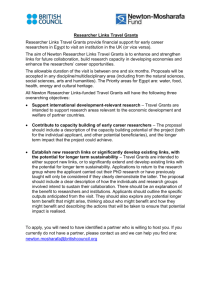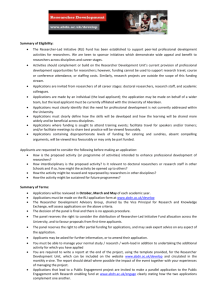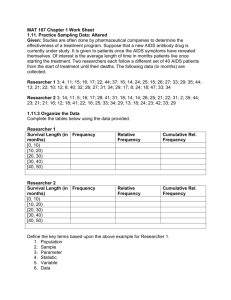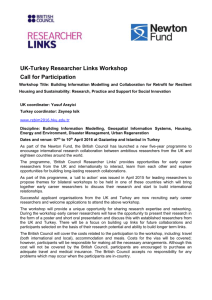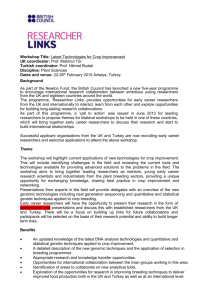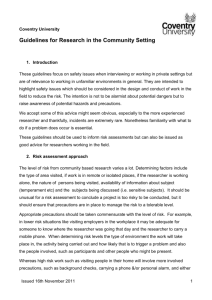E. Goff-Article Analysis
advertisement
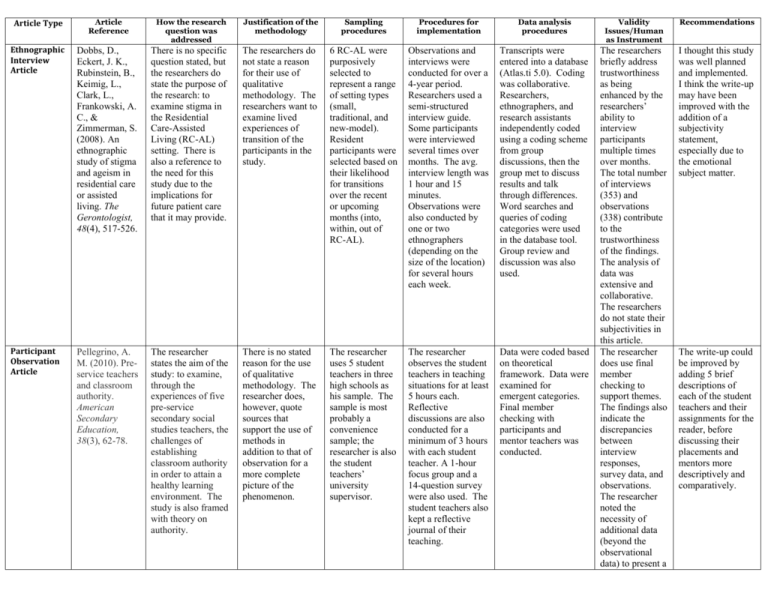
Article Type Article Reference How the research question was addressed Justification of the methodology Sampling procedures Procedures for implementation Data analysis procedures Validity Issues/Human as Instrument Recommendations Ethnographic Interview Article Dobbs, D., Eckert, J. K., Rubinstein, B., Keimig, L., Clark, L., Frankowski, A. C., & Zimmerman, S. (2008). An ethnographic study of stigma and ageism in residential care or assisted living. The Gerontologist, 48(4), 517-526. There is no specific question stated, but the researchers do state the purpose of the research: to examine stigma in the Residential Care-Assisted Living (RC-AL) setting. There is also a reference to the need for this study due to the implications for future patient care that it may provide. The researchers do not state a reason for their use of qualitative methodology. The researchers want to examine lived experiences of transition of the participants in the study. 6 RC-AL were purposively selected to represent a range of setting types (small, traditional, and new-model). Resident participants were selected based on their likelihood for transitions over the recent or upcoming months (into, within, out of RC-AL). Observations and interviews were conducted for over a 4-year period. Researchers used a semi-structured interview guide. Some participants were interviewed several times over months. The avg. interview length was 1 hour and 15 minutes. Observations were also conducted by one or two ethnographers (depending on the size of the location) for several hours each week. Transcripts were entered into a database (Atlas.ti 5.0). Coding was collaborative. Researchers, ethnographers, and research assistants independently coded using a coding scheme from group discussions, then the group met to discuss results and talk through differences. Word searches and queries of coding categories were used in the database tool. Group review and discussion was also used. I thought this study was well planned and implemented. I think the write-up may have been improved with the addition of a subjectivity statement, especially due to the emotional subject matter. Pellegrino, A. M. (2010). Preservice teachers and classroom authority. American Secondary Education, 38(3), 62-78. The researcher states the aim of the study: to examine, through the experiences of five pre-service secondary social studies teachers, the challenges of establishing classroom authority in order to attain a healthy learning environment. The study is also framed with theory on authority. There is no stated reason for the use of qualitative methodology. The researcher does, however, quote sources that support the use of methods in addition to that of observation for a more complete picture of the phenomenon. The researcher uses 5 student teachers in three high schools as his sample. The sample is most probably a convenience sample; the researcher is also the student teachers’ university supervisor. The researcher observes the student teachers in teaching situations for at least 5 hours each. Reflective discussions are also conducted for a minimum of 3 hours with each student teacher. A 1-hour focus group and a 14-question survey were also used. The student teachers also kept a reflective journal of their teaching. Data were coded based on theoretical framework. Data were examined for emergent categories. Final member checking with participants and mentor teachers was conducted. The researchers briefly address trustworthiness as being enhanced by the researchers’ ability to interview participants multiple times over months. The total number of interviews (353) and observations (338) contribute to the trustworthiness of the findings. The analysis of data was extensive and collaborative. The researchers do not state their subjectivities in this article. The researcher does use final member checking to support themes. The findings also indicate the discrepancies between interview responses, survey data, and observations. The researcher noted the necessity of additional data (beyond the observational data) to present a Participant Observation Article The write-up could be improved by adding 5 brief descriptions of each of the student teachers and their assignments for the reader, before discussing their placements and mentors more descriptively and comparatively. Artifact Article Ishii, H., Gilbride, D. D., Stensrud, R. (2009). Students’ internal reactions to a one-week cultural immersion trip: A qualitative analysis of student journals. Journal of Multicultural Counseling and Development, 37 (1), 15-27. The research question is broad: What do counseling students experience during their cultural immersion, as reflected in their journal writing? More questions guiding the coding process are stated in the analysis section of the paper. This study uses the grounded theory method. The authors state their belief: investigating the immersion experiences of the participants without focusing on preselected outcome constructs allowed for a more comprehensive exploration. 15 of 24 master’s level counseling students agreed to participate in the study. They would allow the journals of their experience to be used for the study. Prior to the immersion trip, the participants attended several meetings for background and training. Students were required to keep a daily journal of reflections. The journals were to provide evidence of the attainment of specific educational outcomes outlined in the class syllabus. 15 journals were collected (a total of 238 double-spaced, typed pages). One researcher began using open coding analysis on seven of the journals. Broad questions guided the initial coding process. The researcher noted the emphasis of participant writing on their internal reactions to the experience. Data was compared with counseling literature and analyst experience. The participants’ internal reactions then became the primary focus of analysis. Categories were generated, constant comparison to raw data, and peer debriefing and audit were used in a circular process. complete picture of the development of classroom management. This adds to the validity of the overall study. This article provides an entire section on trustworthiness. The authors note several techniques that were used to promote the trustworthiness of their study: peer debriefing, use of the course instructor for triangulation (member checking was considered but not possible), the analyst participated in the trip to gain contextual knowledge, thick description and illustrative quotations were used, and independent audit was used. The researchers did list some of the limitations of the study. I would add that the researchers should have planned better for carrying out member checking, especially since the study was completely based on the personal reflections of the participants.



